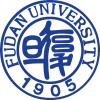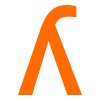
Transcranial Alternating Current Stimulation
StrokeTo investigate the efficacy of using transcranial alternating current stimulation (tACS) to enhance the regaining of neurological function among post-stroke patients.

A Safety and Tolerability Study of 42037788 (Referred to as CNTO 0007) Compared With Placebo in...
StrokeIschemia1 moreThe purpose of this study is to evaluate the safety and tolerability of 42037788 (CNTO 0007) in patients who have suffered a stroke. The study is not designed to establish efficacy, although preliminary explorations will be conducted.

Efficacy and Safety Study of GM602 in Patients With Acute Middle Cerebral Artery Ischemic Stroke...
StrokeThe purpose of this research study is to determine whether the investigational drug GM602, is effective and safe in the treatment of ischemic stroke (strokes caused by a blood clot blocking the flow of blood through one, or more of the blood vessels supplying the brain) when administered up to 18 hours after symptoms begin.

Astragalus Membranaceus for Brain Edema Induced by Hemorrhagic Stroke
StrokeHemorrhagic Transformation Due to Acute StrokeAstragalus membranaceus (AM) is used to treat stroke for a long period, and a number of studies have known that AM can reduce cerebral infarction area and has anti-oxidation. Hemorrhagic stroke will induce secondary peri-blood clot edema and that may increase intracranial pressure to exacerbate clinical symptom. Therefore, the purpose of the present study was to investigate the effect of AM on hemorrhagic stroke edema. The investigators selected 80 hemorrhagic stroke patients , and who the stroke is first attack, they were randomly divided into control and experimental groups, and each group was 40 patients as follows: 1) control group, accepted AM placebo 2.8 g three times per day (tid) treatment for continuously 14 days from second day of admission or operation, except standard ordinary treatment; 2) experimental group, accepted AM 2.8 g tid treatment for continuously 14 days from second day of admission or operation, except standard ordinary treatment. Computer tomography (CT) examination was done at first day, 4th day and 7th day of admission, respectively. The ratio of brain edema was calculated by CT image, and inflammatory index including the levels of C-reactive protein (CRP), erythrocyte sedimentation rate (ESR),Creatine Kinase BB Isoenzyme (CMBB). D-dimer from venous blood also were measured. In addition, the score including Glasgow outcome scale (GOS), Modified rankin scale (MRS), Function independence measure (FIM), Barthel index (BI) was recorded one week, four weeks and 12 weeks after admission or surgical operation, as an index for clinical symptoms. The index for the therapeutic effect of AM was according to above-mentioned the ratio of brain edema, inflammatory index and clinical symptoms. The investigators expected the results of the present study may provide a scientific evidence for the hemorrhagic stroke edema treatment of AM, thus, the present study may contribute to use the method of integrated Chinese and Western Medicine for the treatment of stroke, and to the research of Chinese Medicine.

Interhemispheric Inhibitory Interactions
StrokeAfter a stroke the excitability of the brain decreases on the stroke side and increases on the opposite, non-stroke side. These changes make use of the stroke-affected arm difficult and slow recovery. Rehabilitation exercises that increase arm use after stroke help increase brain excitability, but the net effect of this approach is low. New therapies are needed that restore more equal levels of brain excitability between the two sides. Brain stimulation is a noninvasive way to affect activity the excitability of brain cells. Pairing brain stimulation with exercises that require patients to learn new movements may help the brain to learn. Using stimulation that reduces activity in the side opposite to the stroke can increase activity on the stroke -affected side, through connections between the two brain hemispheres. The purpose of this study is to test if brain stimulation on the side opposite to the stroke, paired with arm movement exercises, can help patients learn new arm movements and improve arm function. In this study people with stroke will receive brain stimulation over two different areas on the side of the brain opposite to the stroke: 1) those areas responsible for movement and 2) those responsible for sensation. These experiments will test both the short and long term effects of brain stimulation on patients' learning and arm function and will allow us to identify which area of the brain best improves learning and arm function. These experiments have the potential to improve the effectiveness of rehabilitation after stroke. The proposed study is among the first to test stimulation over the side of the brain opposite to the stroke damage and at multiple sites. This unique approach may help stimulate the development of new methods for stroke rehabilitation.

Early Versus Delayed Treatment of Unilateral Neglect After Stroke
Spatial Neglect After Stroke'Unilateral neglect' is a disorder that occurs regularly after stroke. It is caused by right- as well as left-sided brain lesions, but more often by right-sided lesions. Patients with this disorder neglect the contralesional side of space and/or their body. Their body axis is often shifted ipsilesionally. A specific disorder that can appear in neglect patients is 'contraversive pushing': a postural deviation to the neglected side because the patient pushes himself away from the ipsi- to the contralesional side. One of the most promising neglect interventions is prism adaptation (PA): inducing an optical shift of the visual field by means of prism glasses. This results in a modulation of brain areas involved in neglect and in an improvement of the neglect symptoms and postural deviation. Research questions: Which period is best suited to maximize therapeutic effects? In this respect the effects of early and delayed PA will be compared, regarding neglect-, postural and cerebral measures. Which factors lead to a less favorable treatment outcome or to therapy resistance for PA? Will the impact of PA be larger if postural factors are taken into account in the prism therapy?

Efficacy and Safety Trial of Transcranial Laser Therapy Within 24 Hours From Stroke Onset (NEST-3)...
Acute Ischemic StrokeThe purpose of this pivotal study is to demonstrate safety and efficacy of transcranial laser therapy (TLT) with the NeuroThera® Laser System in the treatment of subjects diagnosed with acute ischemic stroke. The initiation of the TLT procedure must be feasible for each subject between 4.5 and 24 hours of stroke onset.

Contrastim Stroke Trial
StrokeThis is a prospective randomized controlled feasibility study to determine whether navigation guided repetitive transcranial magnetic stimulation (rTMS) to the healthy hemisphere in patients with subacute stroke has a beneficial effect when given concurrently with task-oriented motor rehabilitation of the arm and hand. Navigation guided rTMS requires a structural MRI scan for targeting stimulation and therefore structural MRI will be performed on all subjects. In addition the study intends to determine whether measures of motor tract integrity (MTI) assessed by navigated brain stimulation (NBS) and MRI diffusion tensor imaging can be used to clarify prognosis of motor recovery and to monitor progress with rehabilitation. 30 subjects with ischemic or hemorrhagic stroke 3-9 months prior to enrollment and with residual upper limb hemiplegia will be randomized to receive either 1 Hz rTMS to the contralesional hemisphere for 30 minutes 3 times a week for 6 weeks along with rehabilitation therapy or sham rTMS to the contralesional hemisphere for 30 minutes 3 times a week for 6 weeks along with rehabilitation therapy. Primary outcome is improvement on the Action Research Arm Test, a measure of arm and hand function in people with stroke. Outcomes will be measured immediately post treatment, and at 3 months and 6 months post treatment.

Living Well With Stroke
Cerebrovascular StrokeDepressionThe overall goal of this study is to conduct a three-armed randomized controlled trial (RCT) in stroke survivors with depression to determine if a brief psychosocial-behavioral therapy intervention delivered in-person (arm A) or by telephone (arm B) is better than usual care (arm C), in terms of percent reduction in depressive symptoms and % of participants achieving remission of symptoms.

Pilot Investigation of Stem Cells in Stroke
StrokeThe study is designed to test the safety of a manufactured neural stem cell line (CTX cells) delivered by injection into the damaged brains of male patients 60 years of age or over who remain moderately to severely disabled 6 months to 5 years following an ischemic stroke. In addition the trial will evaluate a range of potential efficacy measures for future trials. Treatment will involve a single injection of one of four doses of CTX cells into the patient's brain in a carefully controlled neurosurgical operation performed under general anesthetic. The trial is designed to treat 12 patients and measure outcomes over 24 months. Patients will be invited to participate in a long-term follow-up trial for a further 8 years.
